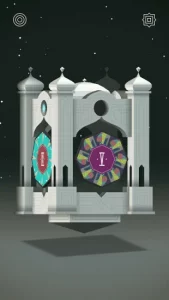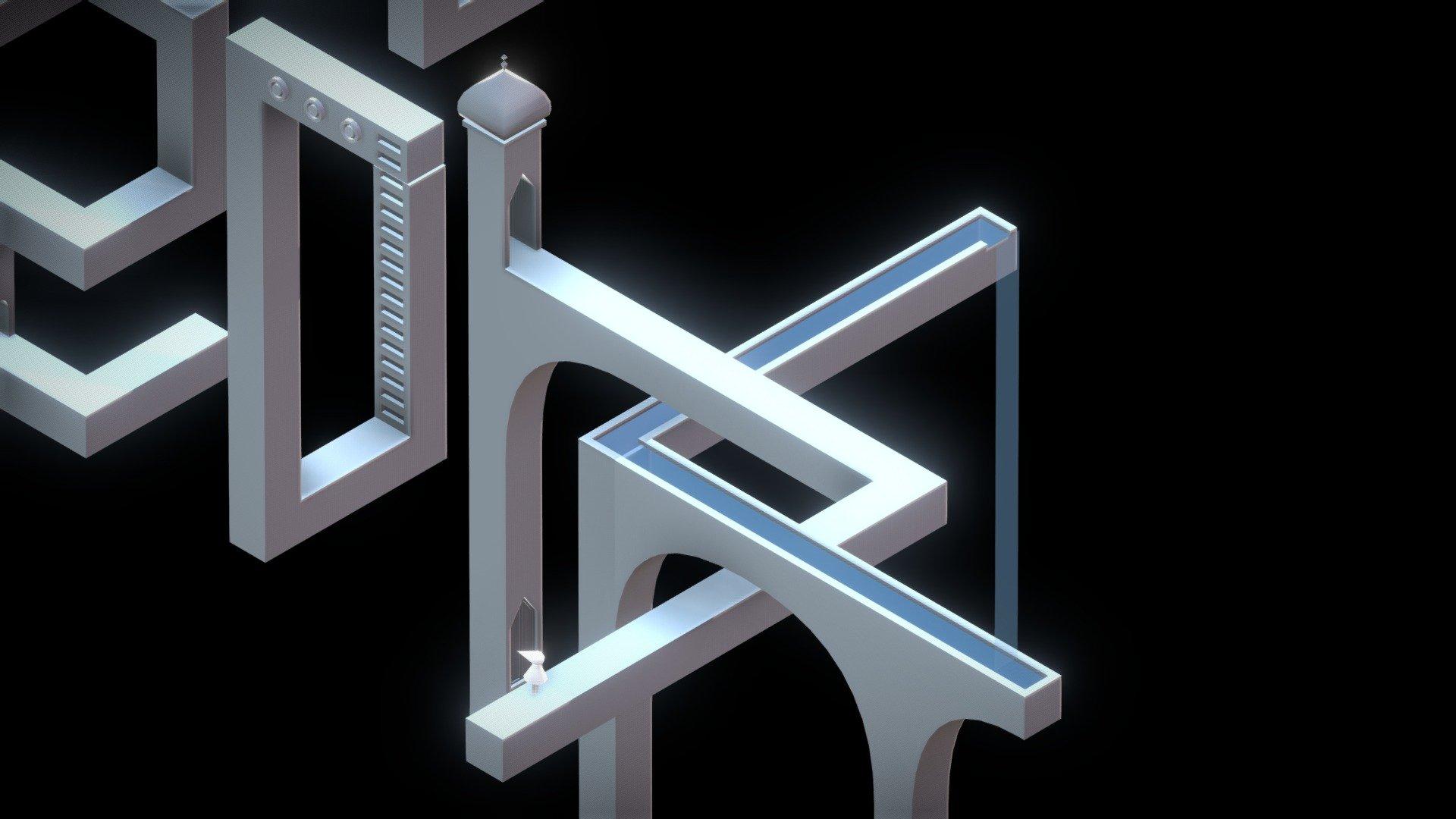Monument Valley is a puzzle game developed and published by Ustwo Games. It first released on iOS in April 2014, and subsequent Android and Windows Phone releases followed. I don’t usually play mobile games, but I was surprised by the precision of Monument Valley‘s touch controls. The game involves navigating the character Ida through various non-Euclidean puzzle environments to reach a goal location. It seems like the game was developed for a casual audience, considering the lack of difficulty and the ubiquity of the platform. It’s always to nice to see games like this without ads or microtransactions, but unfortunately games like Monument Valley in this regard are becoming scarcer in the modern mobile marketplace.
Monument Valley is singularly committed to non-Euclidean perspective-based mechanics. An example of this is the game’s level select menu; an arch with 90 degree corners. The player can rotate the arch 90 degrees to select the next or previous level, so I immediately thought “Wow, this game only has four levels?” the first time I saw this menu. After playing a few more levels, I rotated the arch again to reveal the fifth face of this apparently square building and it was entirely consistent with the level design I’d experienced so far.

The level select menu. There are only four sides to this building, right?
Despite this detachment from the properties of Euclidean space, the menu can still intuitively be understood by the player; rotating clockwise (as viewed from above) advances to the next level and rotating counterclockwise shows the previous level. The game’s levels are filled with geometry that seemingly exists in 3D space but does not follow the rules of Euclidean space as we know it, yet the game guides the player to manipulate and understand these physically impossible environments. The optical-illusion puzzle mechanics in the levels of this game mean that my experience with the menu was far from the only time it managed to subvert my intuitions about how I could and couldn’t manipulate the game world, and that’s what I imagine stands out about this game to most people.

The playable character, Ida, about to walk on a flat path to ascend a tower.
Since the whole game is about navigating the consistency of these environments through your 2D perspective of them, it makes a lot of sense that the control input would be specifying a point you can see on the 2D plane rather than a more traditional movement scheme (that was probably designed for Euclidean spaces). Fez, a similar perspective-bending game, manages to make more traditional controls work but it doesn’t have the same isometric perspective as Monument Valley.
My only real complaint about the game is that nearly everything can be solved through simple trial and error – there isn’t much backtracking that would really force the player to build a mental map of the game’s beautiful, bizarre environments. I think there is a lot of potential for interesting puzzles here because the logic of the games’ environments are conveyed to the player so well despite being so hard to put into words.
The game is quite beautiful to look at, but it’s not very long — there are only ten levels. There is a sequel though, and I bought it at the same time because of a discount, so hopefully it sates my appetite for more perspective-based puzzle solving.



